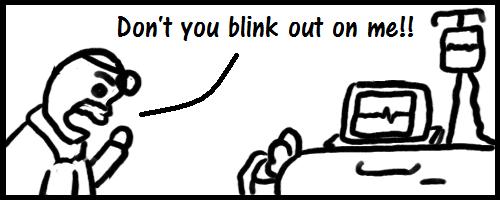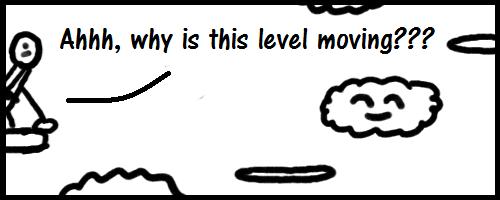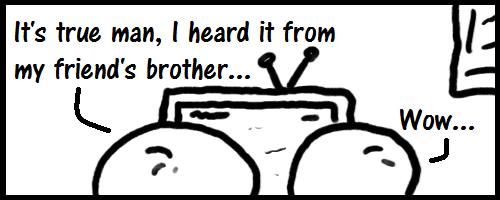![]()

May 06, 2009
By Thomas Raymond
1. Blinking to Death (Seen in: Bayou Billy, Double Dragon)
Games are violent. Sometimes this violence involves killing large masses of bad guys. This raises the question of how to deal with that nasty stinking corpse left behind. Newer games usually choose to discreetly make them disappear when we're not looking. In other cases like Fallout 3, where the corpse might actually serve a purpose, the bodies are left behind for days after the kill.

That's not how we did things 'back in the day'. Older systems didn't have the graphical horsepower to litter the screen with tons of corpses, so they had to remove them as new enemies appeared. And since you were usually looking at the same screen you killed them on, there wasn't really room to do it in a discreet way. When we killed someone, their body blinked a couple times and vanished. It was satisfying too. As soon as you saw that first blink, you knew the fight had been won.
2. The Scrolling Level (Seen in: Super Mario Bros. 3, Back to the Future)
Ahhh, freedom. Games these days thrive on it. Huge open worlds like Oblivion offer choices we never dreamed possible back in the 8 bit days. You go where you want to and do what you want to... when you want to do it. We've embraced this new found freedom with open arms, but things were not always this way. This brings us to the dreaded 'scrolling level'.

These levels did not screw around. Most side scrolling 2-D platformers had a time limit. Sure, but you were still free to move at your own pace. The scrolling level says 'screw that buddy'. For some unknown reason, an invisible wall would push us through the level, leaving us no choice but to be extra careful with our jumps and move at the pace the designers set. It was devious, but it also added a whole new level of challenge.
3. Same Screen Multiplayer (Seen in: R.C. Pro-Am, Smash TV)
Online gameplay is a wonderful thing. We can play people from all over the world and test our skills against the best of the best. It's also a breeding ground for thousands of trash talking kids who feel protected within their small blanket of anonymity. Sadly, they're mostly right.

Things were not always this way. When we wanted multiplayer we picked up the telephone and set it up. Man to man... same room... same screen. A brand new element comes into play when you're in the same room as your opponent, with a big crowd watching. We could still trash talk as much as we wanted to, we just had to pay for it.
4. On to the next screen (Seen in: The Legend of Zelda, Mega Man)
Enemies are pretty persistent these days. They come at your from all angles and every area of the map. If you don't feel like fighting, you usually have a few avenues of escape at your disposal. Games like Grand Theft Auto and Saints Row offer almost as many way to run as they do to fight.

It used to be as simple as going to the next screen. It didn't matter what level of hellish chaos our poor character was stuck in... as soon as we scrolled to that next screen, all was well. Bullets and enemies vanished, the sun was shining and it was a brand new day.
5. The Mystery (Castlevania 2: Simon's Quest, Maniac Mansion)
What do we do when you want to find a code for a game? How about a solution on how to kill a boss or pass a level? We go to the Internet. Usually in less than a minute, we have our answer. The Internet is a great tool for collecting information and socializing with our friends, but it's also spoiled games a bit.

Flash back to the mid 80s. There is no widespread internet with vast catalogs of game codes and walkthroughs for nearly every game in existence. If you wanted help you had a couple monthly gaming magazines and your friends. That was it. Without the aid of the internet to immediately debunk or confirm every rumor under the sun, we just didn't know. We didn't know and guessing was half the fun.
Thomas Raymond is the owner and video editor for www.wapeach.com. He also writes and creates very poorly drawn webcomics.

